Look up at the moon and you’ll probably see a yellowish or white disk, pockmarked by darker structures. But despite this first-glance appearance, the moon isn’t exactly yellow nor bright white. It’s more of a dark grey, mixed in with some white, black, and even a bit of orange — and all this is caused by its geology.
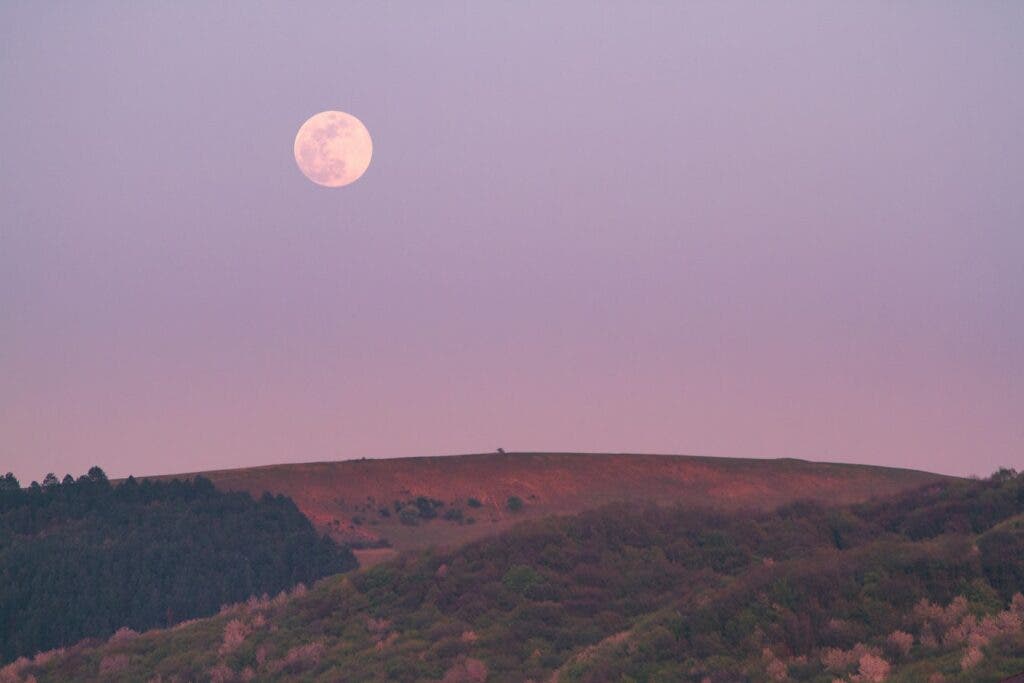
Apparent color and true color
The moon appears to shine because it reflects light from the Sun — it doesn’t actually produce any light of its own. It doesn’t even reflect that much light to begin with — just 3 to 12% of the sunlight that hits it gets reflected.
The perceived brightness of the moon depends on where the moon is in orbit around the Earth. The color of the moon, as it is sometimes seen from Earth, can also vary substantially, from red and violet to white or yellow. However, that’s caused by optical phenomena in our atmosphere, not the moon itself. In other words, that’s just the apparent color, the real color doesn’t really depend on optical shenanigans.
So to get to the bottom of it and see what the exact color of the moon is, you need a good vantage point.
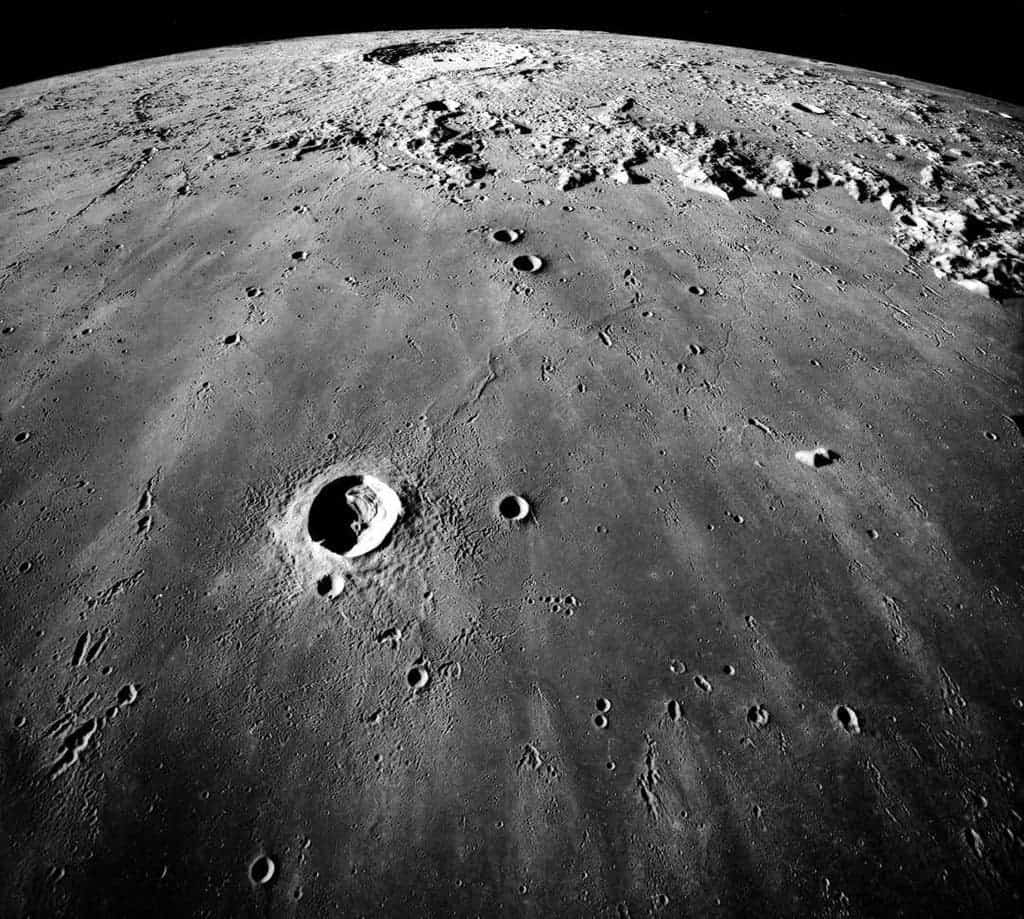
Luckily, the NASA missions of the Apollo Program (and many subsequent missions, both from NASA and other space agencies) have offered us a great view of the moon. We now know that the surface of the moon is made of volcanic rocks — and it’s these rocks that give the moon its true colors.
From the highlands to the maria
The most distinctive aspect of the moon is the contrast between the whiter and the darker areas. The lighter surfaces are the lunar highlands, which are often called terrae, while the darker areas (often, but not always the lowlands) are called maria.
The highland regions are iron-poor and calcium-rich, which is also why they are lighter (iron-rich areas on the moon tend to be darker). The dominant rock in the lunar highlands is called anorthosite — a rock composed primarily of calcium-rich plagioclase feldspar. This rock is also found on Earth, where it looks something like this.
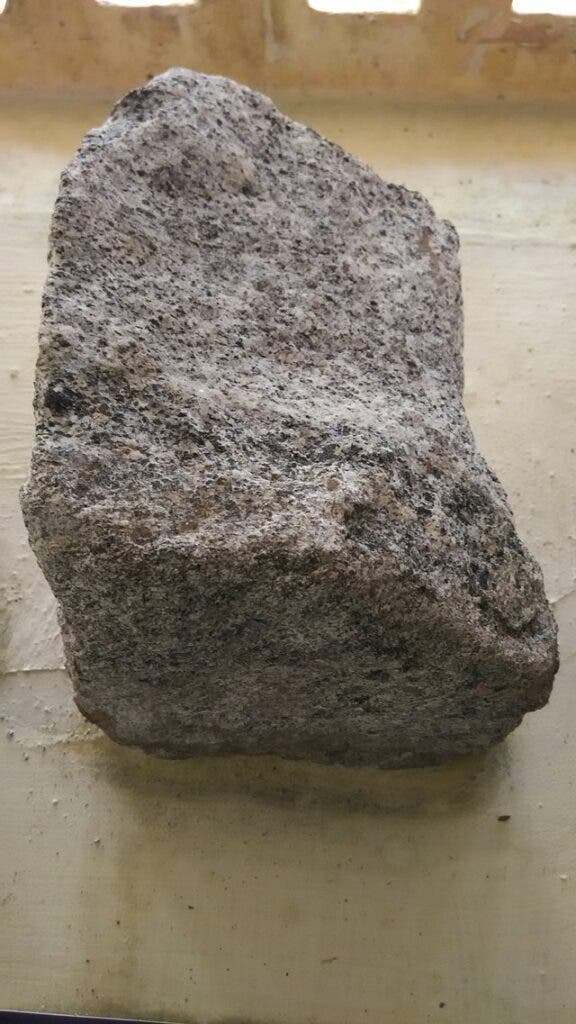
The highland rocks can be even whiter — the so-called ‘pristine highland rocks’ are not substantially altered and may even represent material from the very formation of the lunar crust. These rocks, while very rare, have been collected by Apollo astronauts.
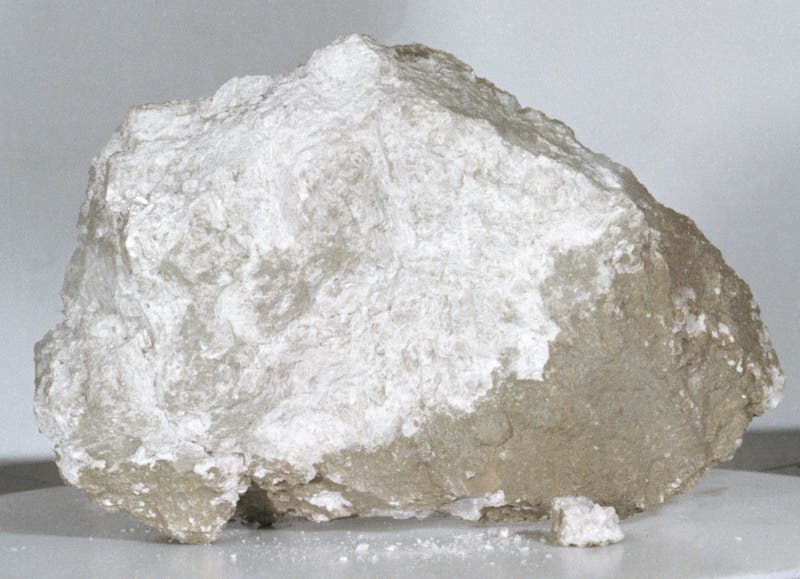
Meanwhile, the maria contain a higher abundance of basalts — volcanic rocks which are very dark. Basalts are also fairly common here on Earth, and they are formed through the rapid cooling of lava rich in magnesium and iron, which are darker. The lunar maria are essentially flood plains of basaltic lava (and basalt lava is also very common on the surface of Mars). The first rocks that Apollo 11 brought back were also basalts.

This difference in geology is largely responsible for the variation in color of the moon. Although lunar rocks do have some peculiarities, they are notably similar to those from Earth.
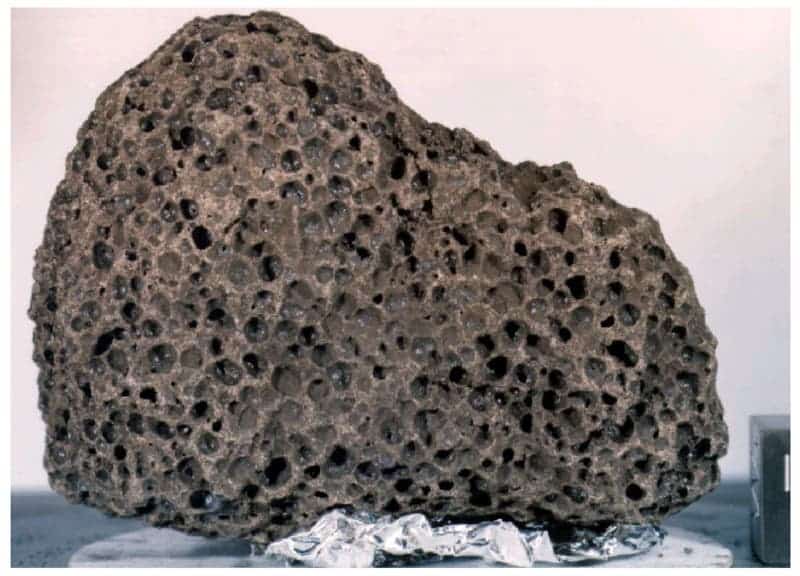
But basalts aren’t always pitch black, or even very black. Sometimes, they contain a mineral called olivine. In its ‘native’ environment (buried at high temperatures and pressures), olivine is a beautiful green crystal. When it moves towards the surface, it starts to wear down, but it can still maintain a greenish hue (like below). This is why some parts of the moon have a very vaguely green tint.
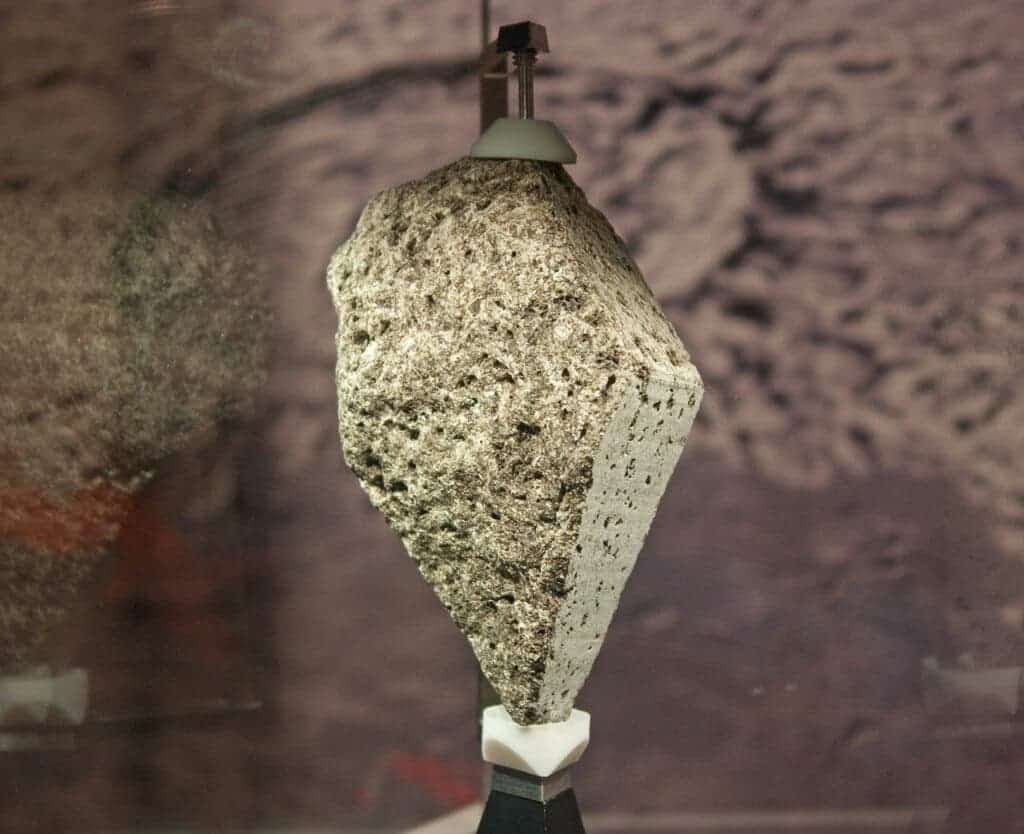
Of course, there are also other rocks on the moon, and other features that can somewhat change the coloring of the scene. The lunar landscape is characterized by impact craters, some volcanoes, hills, lava flows, and depressions. Oftentimes, these features are marked by other rocks called breccias — essentially a name for rocks formed of broken fragments of other rocks, cemented by a fine-grained matrix.
But as it also often happens here on Earth, the rocks aren’t always exposed to the surface. Instead, they could be covered by dust called regolith. Unlike soil here on Earth, which is often held together by water, lunar soil is loose and heterogeneous. But, in many ways, regolith looks like Earth soil, with a dark grey color.

But in addition to all this, there’s another thing that gives the moon a different, orange tint.
Orange soil?!
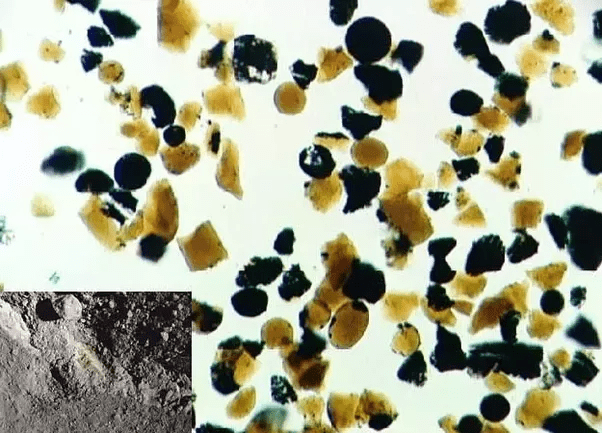
I won’t even try to tell you how some regolith and mineral particles on the moon are orange. Instead, here’s an actual discussion that took place on the moon between the crewmen of Apollo 17, Commander Eugene Cernan, Lunar Module Pilot Harrison Schmitt, and Command Module Pilot Ronald Evans.
145:26:04 Parker: And we’re going to want the SEP opened and dusted as well here. With the switches turned off.
145:26:15 Cernan: O-kaay! O-kaay.
145:26:22 Schmitt: Oh, hey! (Very brief pause)
145:26:25 Schmitt: Wait a minute…
145:26:26 Cernan: What?
145:26:27 Schmitt: Where are the reflections? I’ve been fooled once. There is orange soil!!
145:26:32 Cernan: Well, don’t move it until I see it.
145:26:35 Schmitt: (Very excited) It’s all over!! Orange!!!
145:26:38 Cernan: Don’t move it until I see it.
145:26:40 Schmitt: I stirred it up with my feet.
145:26:42 Cernan: (Excited, too) Hey, it is!! I can see it from here!
145:26:44 Schmitt: It’s orange!
145:26:46 Cernan: Wait a minute, let me put my visor up. It’s still orange!
145:26:49 Schmitt: Sure it is! Crazy!
145:26:53 Cernan: Orange!
145:26:54 Schmitt: I’ve got to dig a trench, Houston.
145:27:00 Parker: Copy that. I guess we’d better work fast.
The yellow-orange coloration is usually owed to hydrated iron oxide on Earth, but on the moon, researchers now believe it is owed to volcanic glass beads.
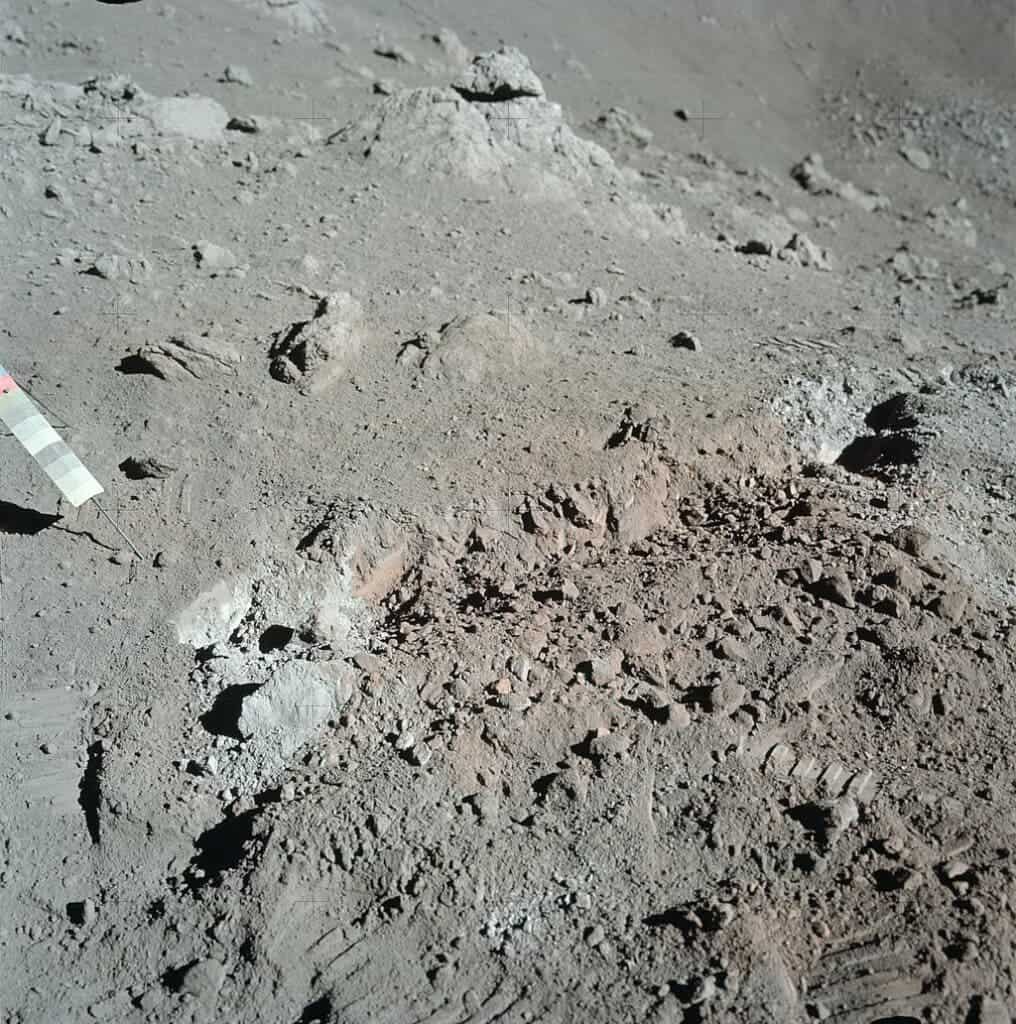
So what’s the color of the moon?
The simple, dull answer is that the moon is essentially covered in various shades of grey: from the very light highlands to the dark basaltic flood plains. But if you’d take a photo of the moon and up its saturation (or if you look very, very closely), you’d see some remarkable variation: green tints in areas rich in olivine, orange tints in areas poor in iron, even some blueish tints in areas rich in titanium.
Sometimes, simple questions like ‘what color is the moon’ actually require a lot of science (and in this case, geology) to get through. The moon is a fascinating place that continues to intrigue and draw our attention. When you look at it, beautifully reflecting the sun’s rays, remember that it’s actually grey, black, green, and orange. But mostly grey and black.






